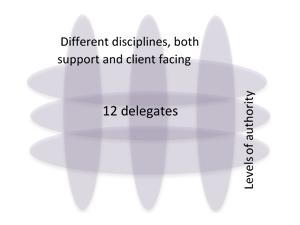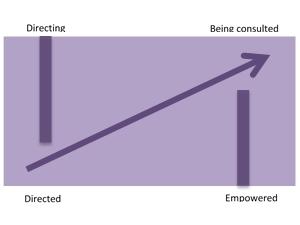A business's most valuable resource is its employees' skill set, according to Derek Jooste of Snap Tech/Kismet Human Potential. As highlighted in the media on an ongoing basis, it's also the one thing that's in short supply in South Africa.
Jooste says: "A vast majority of company employees learn skills as they go by trial and error, but this can result in mistakes that cost the business time and money. If existing staff members train new staff members, they also pass on any bad habits that they may have acquired over time, such as omitting steps in a process. Businesses that provide their staff with formal training and improve their skills not only create a high performance culture, but also a workforce that feels valued and invested in by the business."
He adds: "In many organisations, employees tend to do tasks that are one level below their actual position. The reason for this is lack of skills, which means that tasks that ought to be delegated, simply aren't."
Another big motivator for businesses to invest in training is that most organisations have an informal network of high potential people they may not even be aware of. These types of employees tend to find each other and form a network that's secretive by nature and highly competitive.
If the organisational structure is too rigid, this interpersonal competition for advancement can be destructive. But, if the culture is inclusive and clear about strategy and benefits, then it can be highly productive in that emerging leaders will be identified and properly equipped, resulting in growth and flexibility within the business.
Noel Tichy, head of the Global Leadership Program at the University of Michigan's Business School, provides evidence to prove that training not only builds rare and important skills, but also has a profound effect on the organisation culture through leadership development: "It is a principal job of the leader to help develop the next generation of leaders."
However, not all training is created equal, cautions Jooste. "You need to design your training programme as you would any other system within the business."

Tichy's model for building a high performance culture via training entails running customised courses for specially selected employees, including senior leaders, regional leaders and others with high potential from different levels and disciplines.
Delegates should earn their place on training by showing initiative and potential. This will make training desirable and people will compete to be accepted.
The style of training is action-learning and dialogue. This enables the groups to communicate at a rich level about strategy, values and leadership at all levels (how it occurs/its importance).
After the training, delegates and leadership are given feedback and insights focusing on temperament and potential, listing strengths and weaknesses and suggesting further self-development.

Training provides the accelerator for empowerment. It is a catalyst and compass for ongoing self development. The leader directs less and is consulted more as the employee requires less directedness and becomes competent and accountable (empowered). Eventually, employees do the work and leaders do the strategy.
The key principles of learning *(APMG)
* Learning has three key ingredients: knowledge, skill and attitude
* Things should be learnt the way they will be used: application against case studies, in groups.
* Learning should be followed immediately by its application: learning activities should ideally be delivered 'just in time', immediately before the learning will be used.
Four phases of training
By deliberately going through four phases and communicating the process to the organisation at large, it is possible to create a fruitful learning atmosphere and spark interest in advancement:
1. Preparation: Outputs: measurable capabilities
Content: Topics relevant to the organisation's learning strategy
2. Training: Knowledge: understanding the content
Skill: how to apply knowledge with skill
Attitude: unafraid and willing to try new skills
3. Feedback: Preferences: personality profile
Potential: promise and direction
4. Application: Deliverables: strategic relevance
Metrics: impact and benefits
As the trainer moves through these phases with selected delegates, it will raise interest in the training and spark informal conversations. When announcing the training, the business can communicate the purpose and criteria for selection. This will feed into the informal conversations, which will encourage a positive business narrative that places high importance on personal development initiative-taking.
Share